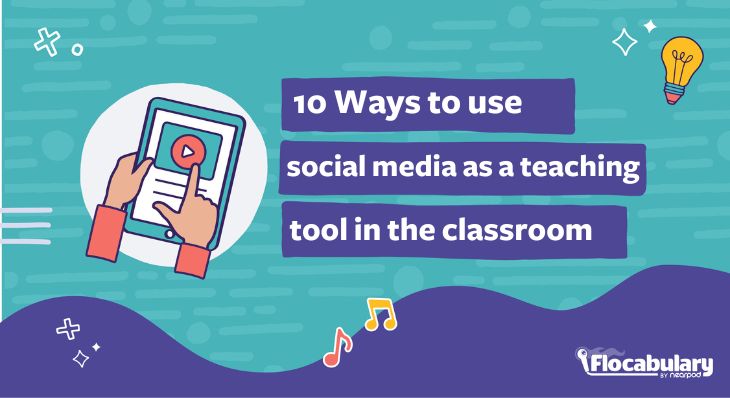
10 Ways to use social media as a teaching tool in the classroom
The impact of social media on students
When it comes to the idea of using social media as a teaching tool, many educators pause; most are aware of the ups and downs of such technology, both personally and professionally. They know the importance of encouraging digital citizenship early and often, as the technology is here to stay. No longer is tech just an option or an add-on; it plays some kind of role in most people’s daily lives. While legally, individuals cannot have their own social media accounts on most major platforms until age 13, there is new pushback that even that age is too young.
“I, personally, based on the data I’ve seen, believe that 13 is too early,” Murthy said on “CNN Newsroom.” “It’s a time where it’s really important for us to be thoughtful about what’s going into how they think about their own self-worth and their relationships, and the skewed and often distorted environment of social media often does a disservice to many of those children.”
U.S. Surgeon General Dr. Vivek Murthy
Effects of social media on education have unfortunately made its early mark with how much it disrupted instructional time. Educators often share how “digital drama” that happens outside the school day interrupts the day-to-day learning environment. Teachers and administrators find themselves playing referee with regard to cyberbullying, digital drama incidents, and even cheating. Reputations are being tarnished with impermeable digital footprints. Kids will be kids, and you can’t learn to be responsible without responsibilities. Yet, developmentally, it is difficult for kids to navigate the permanence and persistence of social media posts (it’s true, Snapchat posts don’t fully “disappear”). So, while there are negative impacts on students due to social media platforms, there are ways to channel that impact to be positive.
What are the benefits of using social media in education?
On the flip side, though, social media as a teaching tool affords connections with students. They can connect with others like them or with others quite different than themselves. They have access to facts and details literally at their fingertips, so learning has shifted from memorization to application, from just the A, B, Cs, and 1, 2, 3s to the 4 Cs of 21st-century learning: collaboration, critical thinking, communication, and creativity. There are definite benefits of social media in education. As technology continues to evolve, so will our educational landscape. And we’ve only tapped the surface—literally, with a touch, tap, and swipe of a finger, look at all we can do. But the growth with technology is exponential (Richard Kurzweil), and we hear about the forthcoming ups and downs with educational technology like artificial intelligence (AI).
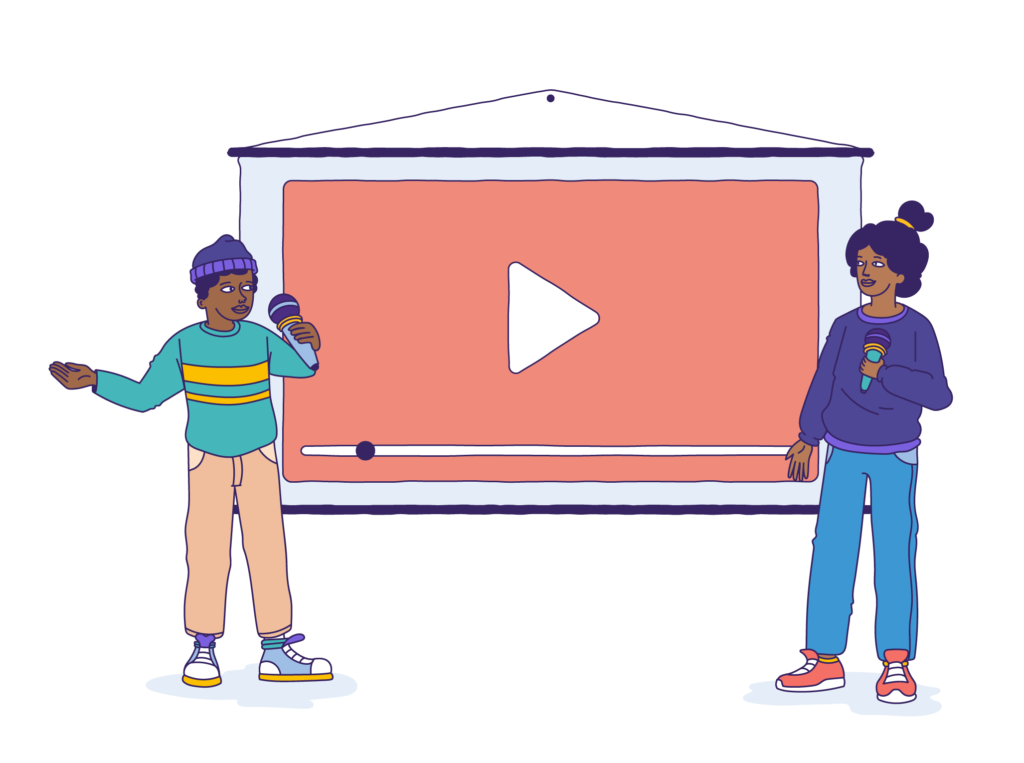
So, while there are many pitfalls to be aware of and to avoid, we also need to look for the good of social media in the classroom, as we’ve never been so connected instantaneously or had such unbridled access to content before. Administrators, consider how your school or district does or doesn’t want you to use social media in the classroom. Most have clear guidelines regarding Acceptable Use Policies (AUPs) or Responsible Use Policies (RUPs).
How can teachers use social media in the classroom? Teachers, as role models, make sure you toe the line when it comes to using social media, both personally—remember, whether you want to or not, you represent your place of work—and professionally. Educational institutions are increasingly recognizing the value of social media in enhancing engagement and improving academic performance through collaborative learning. That said, there are many ways to use social media as a teaching tool in a responsible and respectful way.
10 ways to use social media as a teaching tool in the classroom
So, how do we educators take advantage of social media as a teaching tool? Let’s explore several ways to leverage social media platforms in the classroom with real examples, including Flocabulary’s lessons. Flocabulary empowers your K-12 students to choose from the hundreds of hip-hop videos and songs, cross-curricular activities, or creation tools they want to dive into next. This teacher-trusted site has high-quality videos that captivate students and create an impactful and memorable learning experience by harnessing the power of hip-hop music, visual art, storytelling, humor, drama, and poetry. Each video-based lesson includes a suite of instructional activities that provide additional practice and vocabulary exposures at varying levels of rigor to scaffold instruction.
New to Flocabulary? Teachers can sign up for a trial to access our lesson videos and assessment activities. Administrators can get in touch with us to learn more about unlocking the full power of Flocabulary through Flocabulary Plus.
1. Introduce a whole new world
Pictures say a thousand words … Don’t you agree? Use the videos and images on social media to broaden your students’ horizons. To enrich your social studies curriculum, show them different landscapes and introduce them to new cultures from other parts of the world. Highlight key figures and locales when diving into fiction and non-fiction stories in language arts. Lean on the rich and dynamic multimedia to pique students’ interest in the sciences. Such exposure will help students take ownership of becoming global citizens. Plus, you may inspire them to channel their own creativity into a future career as a photographer, journalist, videographer, producer, musician, designer, marketeer, or author, just to name a few.
2. Showcase real-world application of skills
You know the refrain: “How will I use this in the real world?” Social media gives us a daily feed of everyday life content. Help make connections between what kids are learning about in the classroom and how it ties into “real life” by incorporating social media into the classroom curriculum. Find content authors who can reinforce what you are teaching and be another voice—a teaching partner, if you will: musicians and designers who underscore the applicability of math in the arts, journalists who showcase their research skills in developing stories, bloggers who have honed their unique personal writing style, and even memes that play with the nuances of our English language. Curate a short list of accounts that you refer to, and make sure to underscore why you value and trust the content being shared.
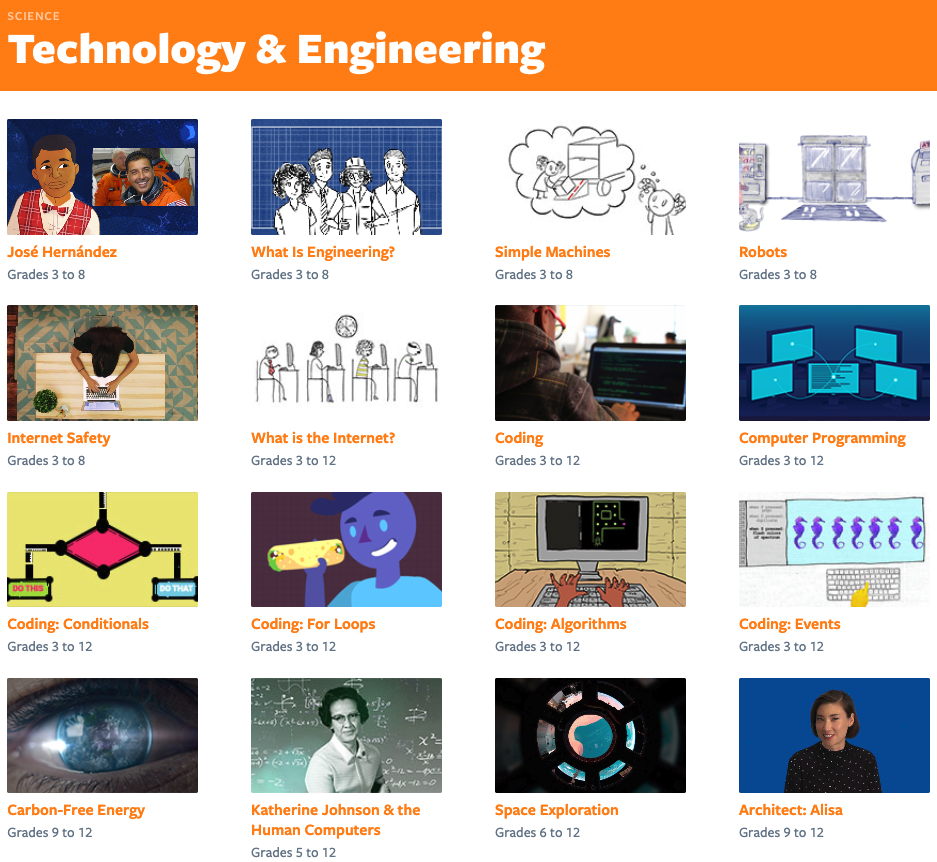
Flocabulary’s engaging lessons on Engineering and Computer Science provide students with a dynamic and insightful exploration of today’s rapidly evolving technology landscape. By delving into topics such as coding, artificial intelligence, and engineering principles, students gain a deep understanding of the building blocks of modern technology. These lessons showcase the real-world applications of these concepts, emphasizing how they contribute to the ongoing evolution of various industries.
3. Highlight the good
The internet can track and target our content consumption. So, in many cases, consumers are getting a more specific and thus more narrow view of what is happening in the world. Sometimes, such technology can take us down a rabbit hole of celebrity gossip, devastating news, or even misinformation. Show how humans are connecting and supporting one another all around the globe. Highlight organizations like Upworthy or GoodNewsMovement that highlight the good in humans with uplifting stories.
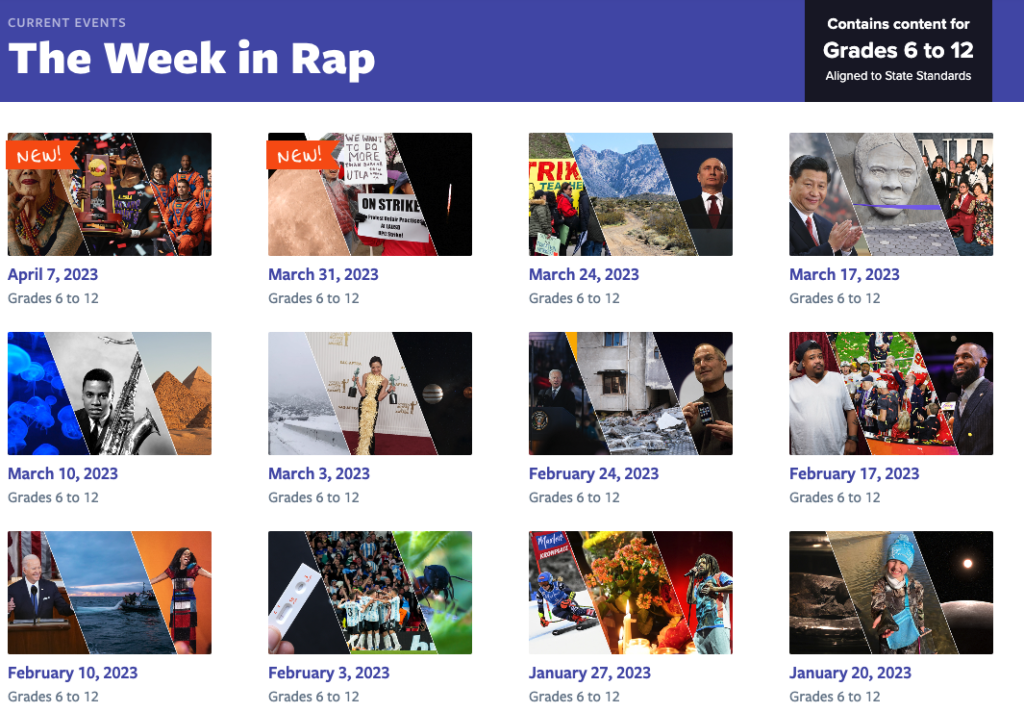
Flocabulary takes a balanced approach to reporting news for students in the Week in Rap, which spotlights weekly current events. The Week in Rap (Grades 6-12) and the Week in Rap Junior (Grades 3-5) is an engaging video wrapping up the week’s top news stories for students through a rap song. Flocabulary ensures that students are exposed to a diverse range of news topics presented in a format that is both engaging and educational.
4. Expose the misinformation
When integrating social media into the classroom curriculum, consider helping students hone a critical eye to consume information. Strengthen students’ media literacy skills by dissecting popular posts so that they learn how to question, investigate, and read laterally. Currently, the situation in Israel and Gaza is fraught with misinformation. On the one hand, human journalism—those everyday folks capturing and sharing what is happening around them—gives us first-hand perspectives on the good, the bad, and the ugly. However, just as readily, such individuals and organizations can share misinformation, unvalidated stories, and misrepresentative photos.
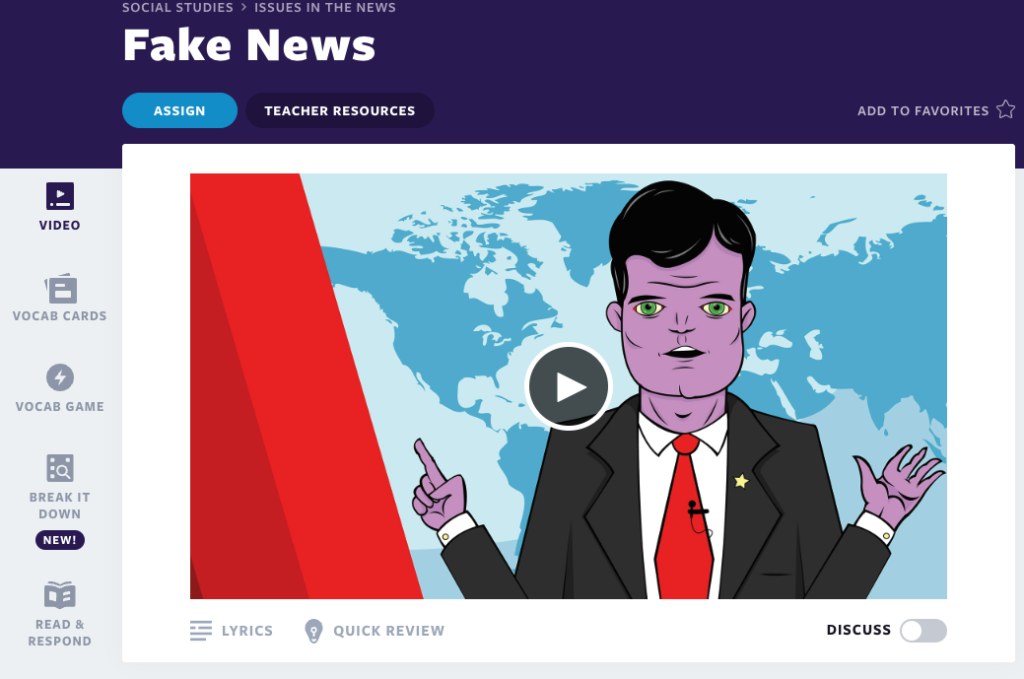
Dive into Flocabulary’s lesson on Fake News and then have students try to apply the new media literacy skills to posts that either you pull as examples or—if they’re old enough—ones that they find as exemplars of good and not-so-good newsworthy posts. Social media posts are plentiful, so they can be daily fodder for the classroom to help students hone that all-important critical eye when it comes to consuming online content.
5. Illustrate the concept of digital footprint
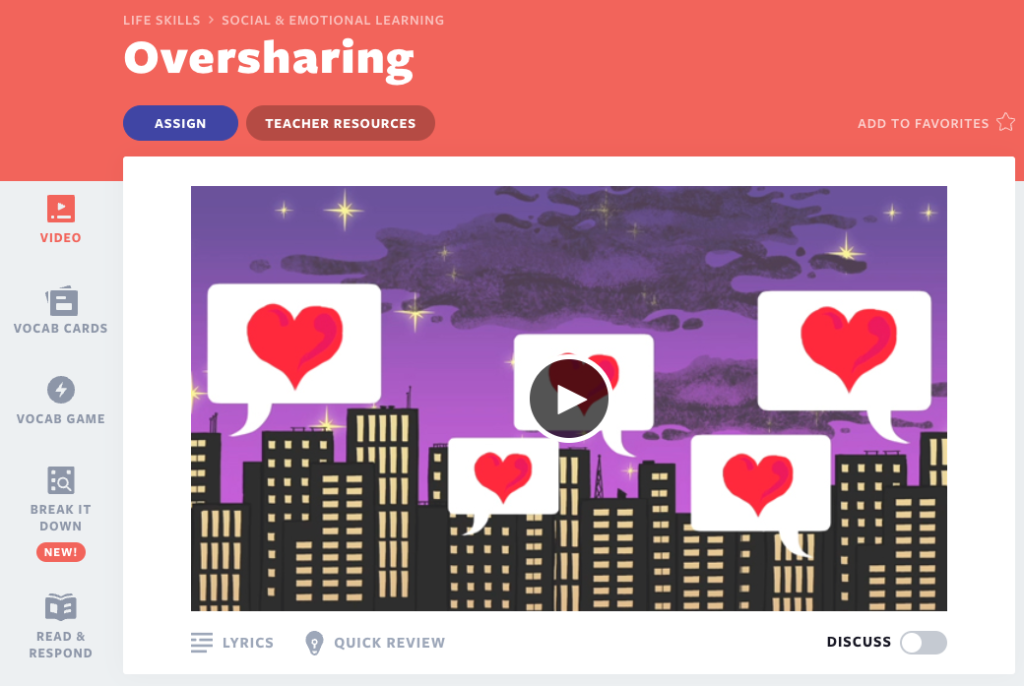
The digital world is abstract, especially for young kids. Lean on social media to show what to do and not do on social media. Flocabulary has a catchy rap about Oversharing that comically highlights when sharing crosses a line. By imparting 10 practical tips for responsible online behavior, the lesson directly supports educators in guiding students on proper social media communication. Teachers can leverage this content to foster digital literacy, facilitate discussions about online etiquette, and empower students to use social media responsibly within an educational context.
6. Find the motivational messages
With our hectic schedules and with the barrage of social media these days, we need to be models for how to pick and choose what and whom we follow. Recent research illustrates the social media toll when it comes to increased levels of anxiety and depression, with girls in particular. Social media can offer support from afar, so seek out accounts that share motivational messages, relaxation techniques, and stress-busters. Such posts might be meaningful words, inspiring images, or touching videos. But such feel-good content highlights the positive in social media. As a class, discuss which words or content resonates, and why. In this way, you are helping students’ (and your own) mental health and wellness by providing them with uplifting resources. And often, such posts are tied to more in-depth resources from trusted organizations that might support those needing more than a daily pick-me-up.
7. Be a follower
But be a picky follower! Find those content creators that you think are additive to how you teach. Maybe they explain content in another way, or they use multimedia to bring a concept alive. Share the accounts that you follow with your students and their families. Again, you can model how to use social media in the classroom by being explicit about how you vet content and the creators to make sure the accounts are informed, reliable, and well-researched. Plus, as an educator, you know the value of not re-creating the wheel. Teachers are a generous bunch who share their ideas (or versions of them) with one another. Seek out clever activities that you can do in the classroom or share with homes for extended offline and online learning opportunities.
Check out some of these content creators:
- Charnaie Gordon: @hereweeread
- Joanne Miller: @headoverheelsforteaching
- Megan Forbes: @toocoolformiddleschool
- Mark Rober: @markrober
8. Appeal to different learning styles
No doubt about it—the multimedia format of social media is appealing, engaging, and oh-so-sticky. As you teach different concepts, remember that you can find bite-sized content on social media that will support your learning objectives in a tech-rich way. From images to graphics to videos to music to animations, social media is chock-full of snappy and clever content for educational purposes.
For example, Flocabulary employs a multisensory methodology that incorporates music, rhythm, and rhyme, backed by extensive academic research. This approach enhances academic memorization and recall, and integrating culturally relevant media, such as hip-hop, can increase student engagement. As a teacher, you are the artist who can help knit together resources to round out a student’s understanding.
Here’s a list of some popular Flocabulary videos, and a video preview!
- Language Arts: Main Idea
- Math: Functions
- Science: Matter
- Social Studies: Katherine Johnson & the Human Computers
- Life Skills: Managing Frustration
9. Connect with the home
Social media is also a great way to share what YOU are doing in the classroom. Showcase those classroom successes! Give your students’ parents and caregivers an insider’s view by sharing posts touting your students’ experiences, progress, and work (remember to follow your school’s policy when it comes to individuals’ media release forms). Provide them with a bit of a refresher by sharing supplemental third-party resources that they can use when helping their kids finish homework or study for a test. Social media can be yet another channel of communication.
10. Have students post on social media for their assignments
If you have students over the age of 13—the legal age for most social media accounts—challenge them to “show what they know” by sharing thematic educational resources and posting about lessons learned. Have them personify notable figures in the past and imagine what their everyday posts might look like. Let them become content creators and ask them to headline a book’s summary in Twitter/X’s 280-character limit. Ask them to create a rap or song about a scientific concept, such as the order of the planets or the periodic table. Have them practice their video editing skills to add transitions, music, and text, a la TikTok and YouTube content.
For those too young, you can still reinforce good digital citizenship by having them envision, for example, what kinds of posts President Lincoln would have made; what kind of digital footprint would he have wanted? Such fun tasks employ both creative and critical thinking skills, and they continue the learning outside of the school day.
Start using social media in the classroom with Flocabulary
Quite quickly, the internet has shown us the role social media can play as a teaching tool. Whether from a teacher online or a de facto educator who is just so good at breaking down concepts or outlining steps for a project, social networks are designed for us to connect, collaborate, commiserate, and celebrate. The lines between IRL (in real life) friends and online friends continue to be redefined, and this new age of pen pals is rich with information and entertainment. Do seek out how you can use social media for educational purposes. Communicate with students to learn whom they follow and why. Be vigilant about the impact on students, and remember to overemphasize the need for digital citizenship norms to continue creating a positive school culture.
New to Flocabulary? Teachers can sign up for a trial to access our lesson videos and assessment activities. Administrators can get in touch with us to learn more about unlocking the full power of Flocabulary through Flocabulary Plus.
